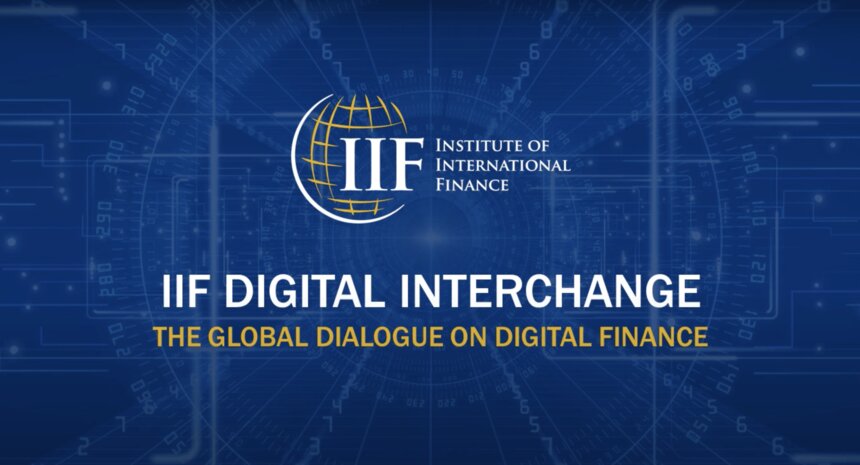[Panel Recap] Done Right, Digital Identity Could Enable More Inclusive Finance

When the fintech community talks about digital wallets, the conversation often revolves around payments. For years, however, innovators have dreamed of digitalizing all the assets we carry in our physical wallets: not just cash, but also proof of insurance and ID cards.
“As we increasingly live in a digital world, the more we could use the information that was in our physical wallets, the easier life gets,” said Flourish managing partner Tilman Ehrbeck on a Sept. 17 IIF Digital Interchange panel. “That was true before the pandemic, and it’s obviously true now for consumers and small businesses.”
As we increasingly live in a digital world, the more we could use the information that was in our physical wallets, the easier life gets.
Hosted by the Institute of International Finance (IIF), the session also featured:
- Hisham Ezz Al-Arab, Chairman & Managing Director, Commercial International Bank (CIB) Egypt
- Linden Dawson, APAC Customer Success Management Lead, Ping Identity
Watch the full on-demand recording of the panel discussion, or continue reading for our recap from the event.
Necessary Layer in the Fintech and eCommerce Stacks
Digital identity is a complex technological, regulatory, and user experience challenge, but “it’s not necessarily an end itself,” moderator Brad Carr, IIF Managing Director of Digital Finance, explained, “it’s a transformative enabler for a lot of other things. It’s perhaps at its most powerful leveraging the digital promise for inclusion.”
For fintech, the most obvious application of digital identity is eKYC. As Hisham related, CIB has been surprised by a surge in digital account signups during the pandemic, since the Egyptian government relaxed the requirement for banks to verify IDs in-person.
“Banks historically ignore the small customers,” Hisham said, because they “cannot profitably cover the cost of account maintenance.” By lowering customer acquisition costs, mobile devices and the potential to verify identify digitally create “a golden opportunity for inclusion.”
Essentially, digital identity is the first step in a virtuous circle of trust: between banks, customers, and merchants.
“Once you have a high level of assurance that a user is who they say they are,” Linden laid out, “then you can build a seamless user experience for them to feel they belong with your brand. And then you have an opportunity to respectfully gather more data from them, and upsell.”
Essentially, digital identity is the first step in a virtuous circle of trust: between banks, customers, and merchants.
SME Use Cases
Payments are often the next step in this cycle, as cash flow data can be used to offer consumers other products. This applies to SMEs as well. Tilman cited Flourish portfolio company ShopUp as an example of how, as merchants digitize, they generate more data that serve as a proxy for underwriting inputs. In many cases, small merchants’ first formal financial banking relationship begins with an eKYC verification.
In many countries, brick-and-mortar merchants need to check customers’ ID, for example, to verify their age when buying alcohol or other controlled products.
In many cases, small merchants’ first formal financial banking relationship begins with an eKYC verification.
For merchants, “one of the big challenges is: who will own the risk,” Linden said. Will merchants accept a digital identity platform, say for verifying a customer is of legal age, and will the merchant be protected by government regulation in doing so?
The Big Challenge Is Regulation
All the panelists agreed that while technology design, inclusive user testing, and financial integration are critical for digital identity platforms, “the big challenge is regulation,” as Hisham put it.
“The key is to put the user at the center of everything,” Linden said, “let them know what they’re agreeing to, and give them the right to be forgotten.” Many of the values she and the other panelists offered for giving people control over their data are reflected in the third pillar of Flourish’s five fair finance principles.
As Tilman explained, a digital identity regime should be inclusive, transparent, interoperable, private, and proportional. (Proportional means that if a merchant needs to know you’re 21 years old, they don’t need to know your exact birthdate or home address. The system should just verify the information the merchant needs.)
A digital identity regime should be inclusive, transparent, interoperable, private, and proportional.
Of course, any bank or merchant that checks identity data must handle it securely. As Brad reminded everyone, data is not the “new oil,” as many say; it’s the new uranium, “it’s powerful, it decays, it’s toxic if it gets out, you need to store it and protect it.”
“There is a public utility character to this,” Tilman said. “We still need the government to provide the original source document. At the other end, the government sets the regulations . It’s a two-sided marketplace. Banks can play a big role, but we need a broader coalition.”
Digital Dilemmas for Incumbent Banks
In a 15-minute fireside chat leading up to Tilman’s panel, Candido Bracher, the CEO of Brazil’s largest private-sector bank Itaú-Unibanco, and IIF Senior Advisor Conan French discussed the dilemmas facing incumbent banks in a digitalizing world.
“As incumbents,” said Candido, “we must leverage the strengths and deal with the limitations .”
Two dilemmas Itaú has confronted: Whether to focus on open distribution or solely marketing its own products and how to become a digital bank.
“Do you make a divide from the old bank, and create a new digital bank from scratch, as a separate entity?” Candido posed, “Or do you transform the incumbent bank?” Either way, incumbents have to “embark on the much more complex journey of learning how to transform.”
Watch the fireside chat on-demand below: